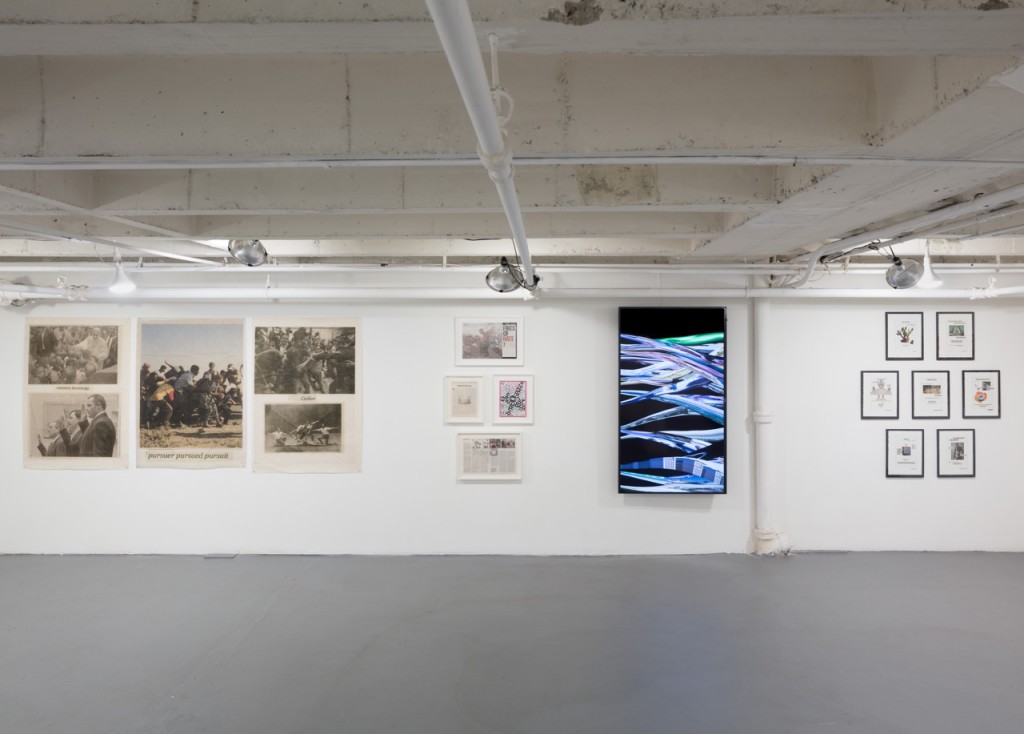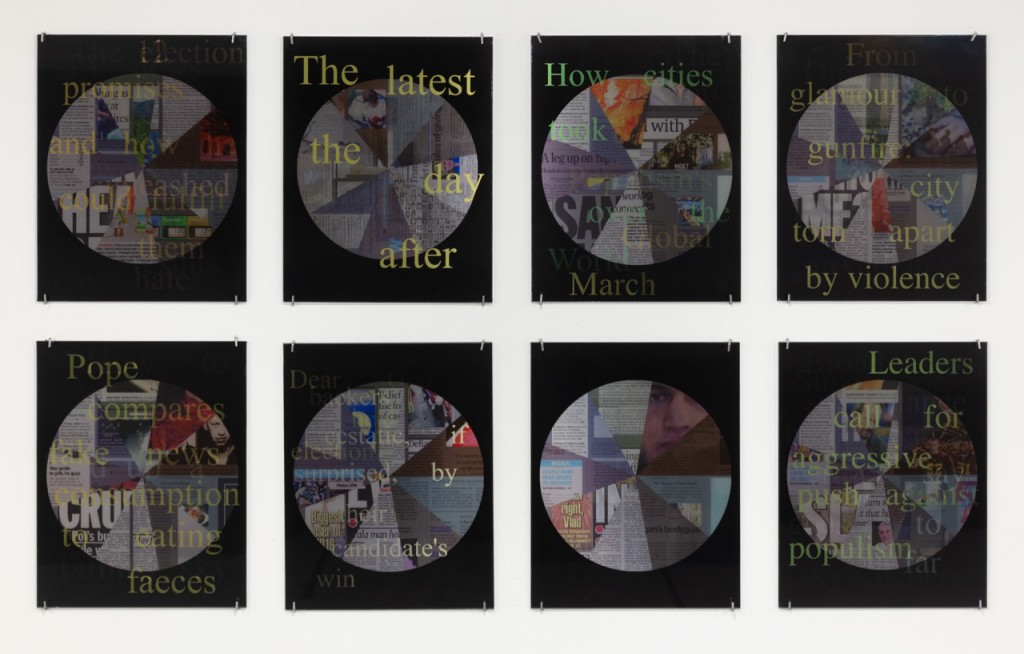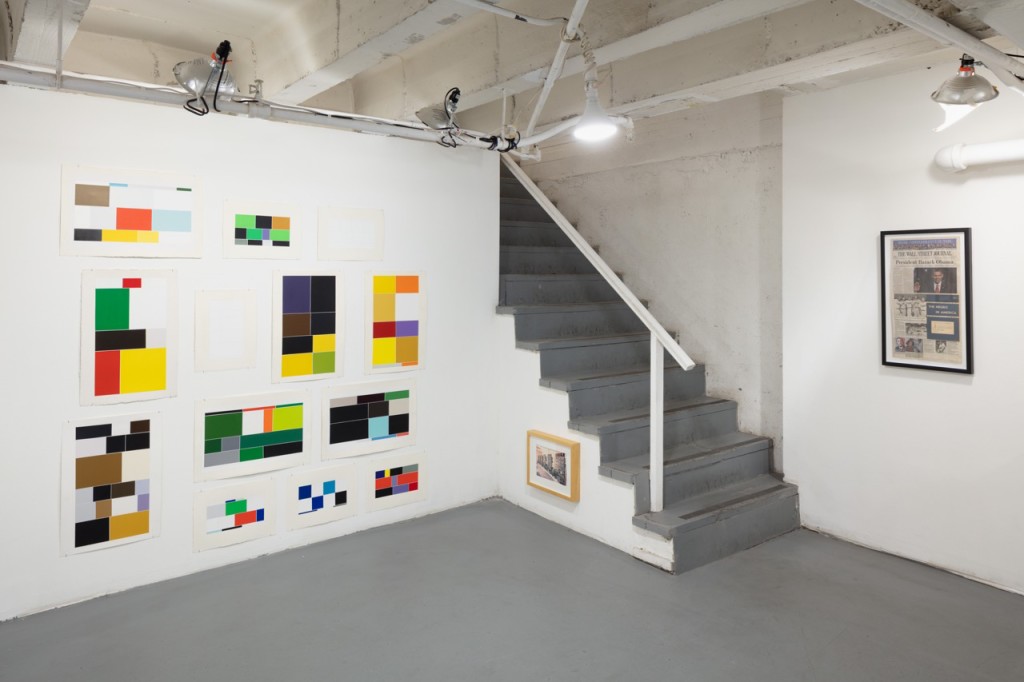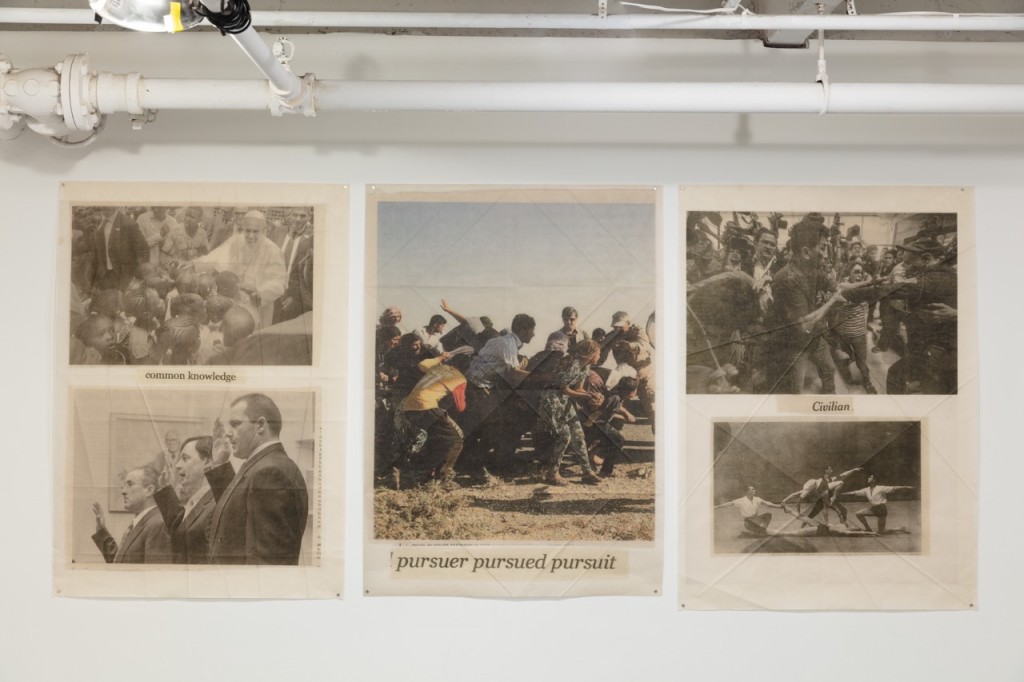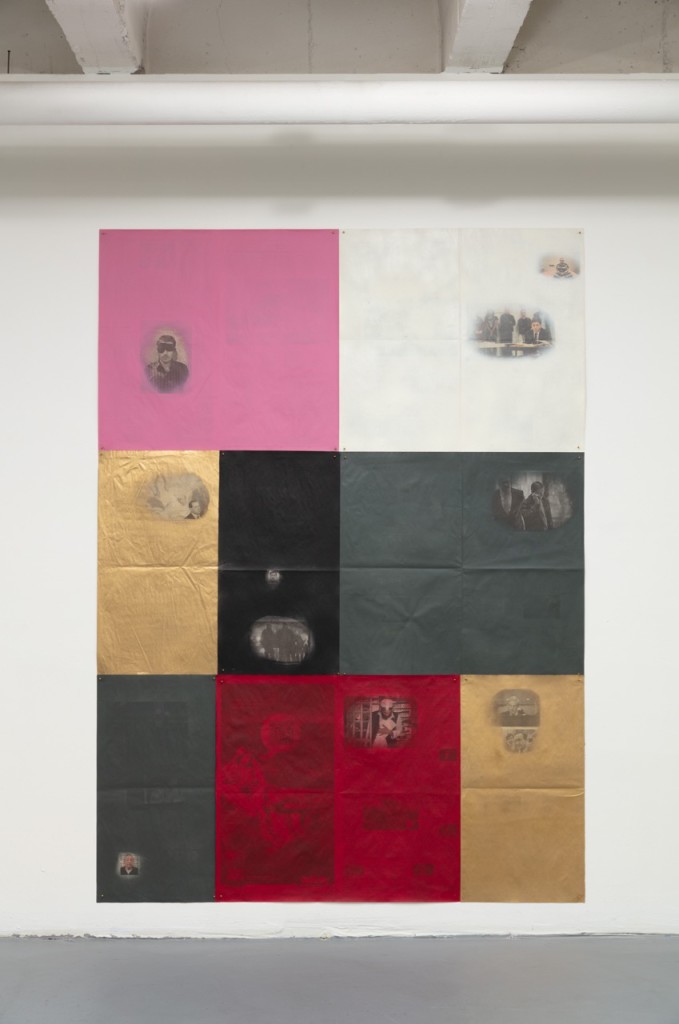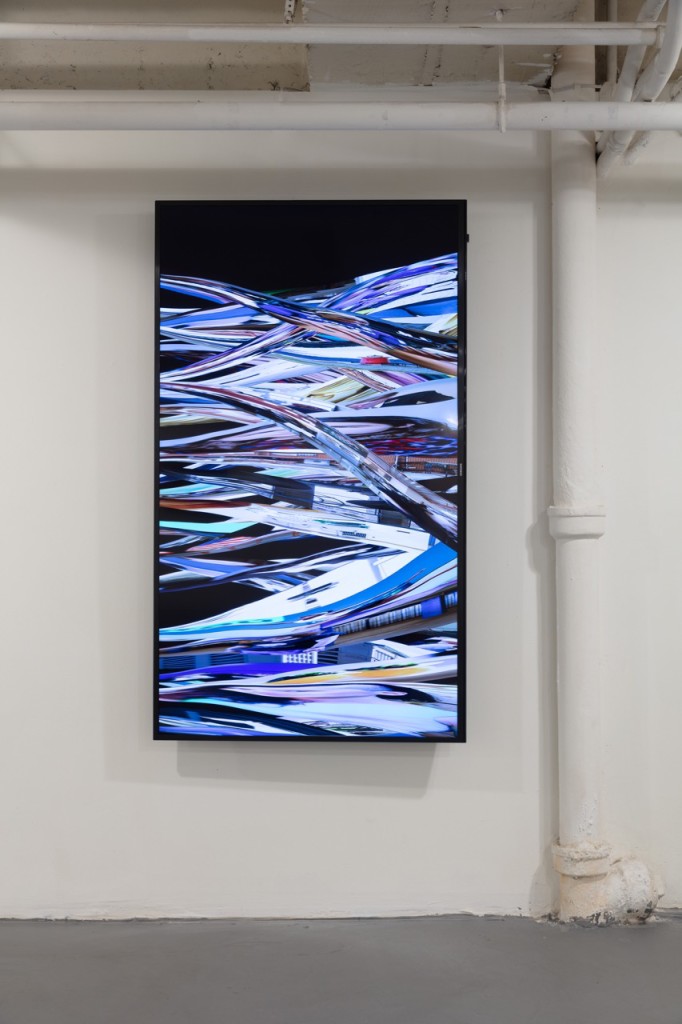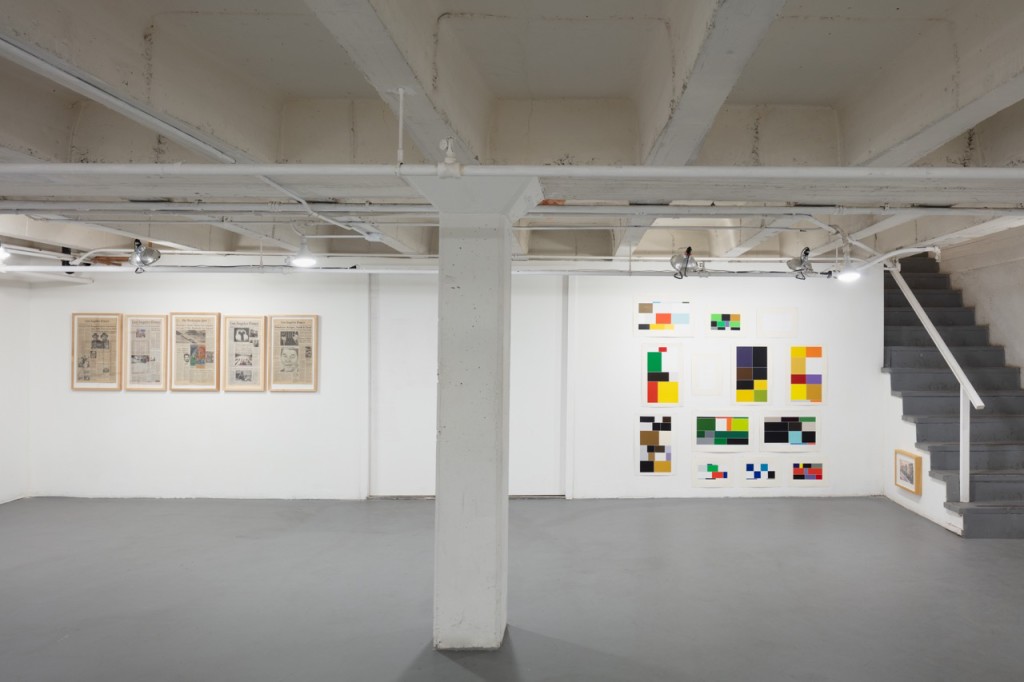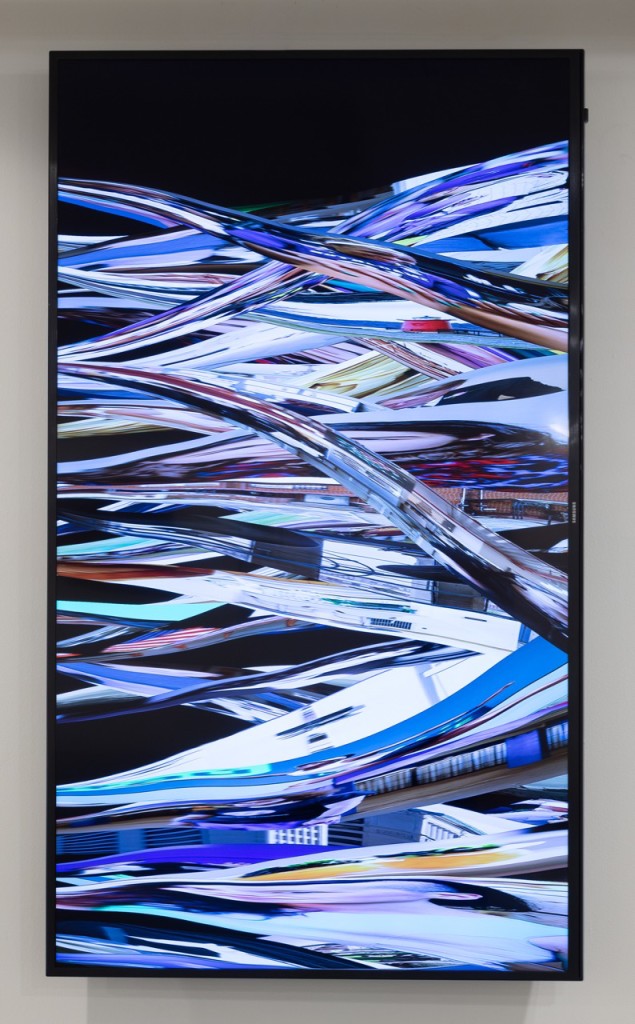If you missed MIS (MISSING) INFORMATION, the powerful show at Charlie James that closed at the start of this month, make no mistake, you’ll be seeing work both by curators Jody Zellen and Brian C. Moss, and the artists in the exhibition again, soon.
The exhibition featured works which drew from ‘the media’ in one way or another. Beginning with an image, a Google search, or the daily newspaper, the artists in this exhibition shift the information dialog in fascinating, evocative, and prescient ways.
The thirteen artists include: Merwin Belin, Jan Blair, Andrea Bowers, York Chang, Michael Genovese, Elissa Levy, Brian C. Moss, Michael Queenland, Casey Reas, Susan Silton, Samira Yamin, Andrew Witkin, and Jody Zellen.
Print and digital mediums were both a part of the show. Zellen notes that print was a particularly fertile ground for art making.
“As raw material for art, this combination of paper and ink amounts to a never-ending supply. It’s relatively cheap and endlessly varied. Most of the artists in this exhibition have a predisposition to print, as only a few have embraced digital delivery of information. The ways artists have and continue to use news media as form and content in their work is wide-ranging.”
From the altered newspaper pages of Merwin Belin and Elissa Levy to the work in which artists such as Jan Blair, York Chang, Michael Queenland and Andrew Witkin clip images and texts, representing them in new configurations, there are new front pages, shamed icons of power, and a reflection of both glory and self-loathing that seems to define modern information culture.
Blair looking for clues and hidden information about our civilization the pages of The New York Times. Chang works from an archive of found images and text culled from years of scanning the Los Angeles and New York daily newspapers. Queenland presents a pairing of the front and the back of a single newspaper clipping, while Witkin selects multiple newspaper clippings because they contain printing errors, shaping images from these which are then shrink-wrapped and encased in a custom frame.
In contrast to his selection of errors and information overload, Susan Silton and Samira Yamin are interested in transformation.
“Through her familiarity with the international language of commercial offset printing, Silton has commissioned printers in different countries to create a series of posters that call attention to the relationship between different types of appropriated materials. Yamin creates intricate geometric patterns found in Islamic culture by hand cutting information away from a January 11, 2010 edition of Time magazine dedicated to the ongoing wars in the Middle East,” Zellen says.
Andrea Bowers and Brian Moss also step back from the mechanical, using graphite to transcribe what they find on the printed page. Moss creates jarring juxtapositions in the form of delicate tracings; Bowers creates using highly detailed pencil drawings of activists in the service of social justice.
Casey Reas and Jody Zellen both gather their content via digital algorithms, while Michael Genovese uses the computer as a starting point, typing specific searches into Google and capturing the results before the images appear.
In Zellen’s own piece, News Cycle, she collages front pages and headlines originally captured by her iOS app, News Wheel.
“Each artist in the exhibition mines the media looking for specific content,” Zellen says. “Their artworks call attention to what is seen, what is missing and what is inferred, as well as the myriad reasons for the disconnects between fact and fiction and the wonderful dissonances that are discerned through their creative investigations.”
According to Zellen “This was not not solely a newspaper art show, but one about missing or mis-information, taking into consideration what is presented, missing and how we fill in the blanks about this kind of ‘information.’
Zellen says she couldn’t play favorites with this exhibition, which focused on LA-based artists, but also included those from out of the region.
“I like them all for different reasons. I was blown away when I saw Merwin Belin’s show at as-is gallery and knew I wanted to include his work in this context. I love York Chang’s new pieces. I saw Andrew Witkin’s work in an art fair 2 years ago and the stayed with me and I knew I wanted him to be in the show. I was also quite taken with Michael Genovese’s images of the screen before information loads and thought they would be an interesting counterpoint to images of the newspaper.”
Zellen says she wanted to include both artists who work with the actual newspaper and artists who “appropriated” the concept.
“For example, Casey Reas uses the digital version of the NY Times to create an ever changing stream of folding news images in his computer generated work. In thinking about the space, I wanted to draw people to the center of each wall where there was a colorful work, then out to the edges. It was also really important to me to include more than one work by each artist if possible, so it was not a show of one image by each artist. I wanted to present bodies of work, not single images.”
Offering an exhibition that was absorbing, deeply pertinent, and, yes – newsworthy – Zellen and Moss created an exhibition both for and about our times. It was one of our favorite topical exhibitions of the year so far, with plenty to “read into” contained within the images.
Look for these curators and artists to pack more of a political and social punch soon.
– Genie Davis; photos: provided by curator



